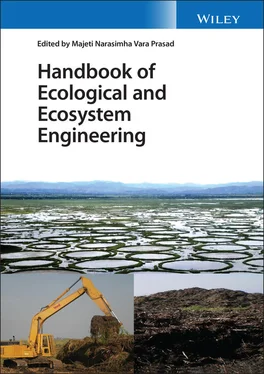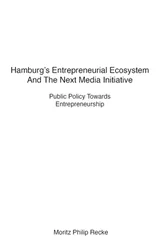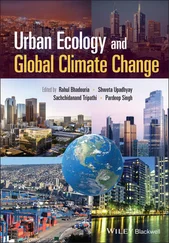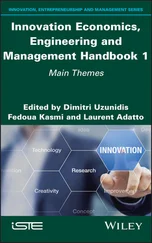43 43 Bracco, S., Calicioglu, O., San Juan, M.G., and Flammini, A. (2018). Assessing the contribution of bioeconomy to the total economy: a review of national frameworks. Sustainability 10: 1698.
44 44 Stephanie, S., An, D.S., Margot, V. et al. (2019). Phytomining to re‐establish phosphorus‐poor soil conditions for nature restoration on former agricultural land. Plant Soil 440: 233–246.
45 45 Sidella, S., Barbosa, B., Costa, J. et al. (2016). Screening of giant reed clones for phytoremediation of lead contaminated soils. In: Perennial Biomass Crops for a Resource Constrained World (eds. S. Barth, D. Murphy‐Bokern, O. Kalinina, et al.), 191–197. Switzerland: Springer International Publishing.
46 46 Barbosa, B., Costa, J., and Fernando, A.L. (2018). Production of energy crops in heavy metals contaminated land: opportunities and risks. In: Land Allocation for Biomass (eds. R. Li and A. Monti), 83–102. Cham, Switzerland: Springer.
47 47 Porter, J.R. and Semenov, M.A. (2005). Crop responses to climatic variation. Philos. Trans. R. Soc. B 360: 2021–2035.
48 48 Hasanuzzaman, M., Nahar, K., and Fujita, M. (2013). Extreme temperatures, oxidative stress and antioxidant defense in plants. In: Abiotic Stress – Plant Responses and Applications in Agriculture (eds. K. Vahdati and C. Leslie), 169–205. London, UK: IntechOpen Limited.
49 49 Awasthi, R., Bhandari, K., and Nayyar, H. (2015). Temperature stress and redox homeostasis in agricultural crops. Front. Environ. Sci. 3: 1–24.
50 50 Yordanova, R. and Popova, L. (2007). Effect of exogenous treatment with salicylic acid on photosynthetic activity and antioxidant capacity of chilled wheat plants. Gen. Appl. Plant Physiol. 33: 155–170.
51 51 Allen, D.J. and Ort, D.R. (2001). Impacts of chilling temperatures on photosynthesis in warm‐climate plants. Trends Plant Sci. 6: 36–42.
52 52 Fahimirad, S., Karimzadeh, G., and Ghanati, F. (2013). Cold‐induced changes of antioxidant enzymes activity and lipid peroxidation in two canola (Brassica napus L.). Cultivars. J. Plant Physiol. Breed. 3: 1–11.
53 53 Wang, W.B., Kim, Y.H., Lee, H.S. et al. (2009). Differential antioxidation activities in two alfalfa cultivars under chilling stress. Plant Biotechnol. Rep. 3: 301–307.
54 54 Posmyk, M.M., Corbineau, F., Vinel, D. et al. (2001). Osmoconditioning reduces physiological and biochemical damage induced by chilling in soybean seeds. Physiol. Plant. 111: 473–482.
55 55 Janská, A., Maršík, P., Zelenková, S., and Ovesná, J. (2010). Cold stress and acclimation – what is important for metabolic adjustment? Plant Biol. 12: 395–405.
56 56 Chen, T.H.H. and Murata, N. (2008). Glycinebetaine: an effective protectant against abiotic stress in plants. Trends Plant Sci. 13: 499–505.
57 57 Larsen, S., Jaiswal, D., Bentsen, N.S. et al. (2016). Comparing predicted yield and yield stability of willow and Miscanthus across Denmark. Glob. Change Biol. Bioenergy 6: 1061–1070.
58 58 McCalmont, J.P., Hastings, A., McNamara, N.P. et al. (2017). Environmental costs and benefits of growing Miscanthus for bioenergy in the UK. Glob. Change Biol. Bioenergy 9: 489–507.
59 59 Kandel, T.P., Hastings, A., Jørgensen, U., and Olesen, J.E. (2016). Simulation of biomass yield of regular and chilling tolerant Miscanthus cultivars and reed canary grass in different climates of Europe. Ind. Crop. Prod. 86: 329–333.
60 60 El Bassam, N. (2010). Handbook of Bioenergy Crops – a Complete Reference to Species, Development and Applications. London, United Kingdom: Earthscan, Ltd.
61 61 Parenti, A., Lambertini, C., and Monti, A. (2018). Areas with natural constraints to agriculture: possibilities and limitations for the cultivation of Switchgrass (Panicum virgatum L.) and Giant Reed (Arundo donax L.) in Europe. In: Land Allocation for Biomass (eds. R. Li and A. Monti), 39–63. Cham, Switzerland: Springer.
62 62 Jensen, A.B. and Eller, F. (2020). Hybrid Napier grass (Pennisetum purpureum Schumach × P. americanum (L.). Leeke cv. Pakchong 1). and Giant reed (Arundo donax L.). as candidate species in temperate European paludiculture: growth and gas exchange responses to suboptimal temperatures. Aquat. Bot. 160: 103165.
63 63 Poudel, H.P., Sanciangco, M.D., Kaeppler, S.M. et al. (2019). Quantitative trait loci for freezing tolerance in a lowland x upland switchgrass population. Front. Plant Sci. 10: 372.
64 64 Paschalidou, A., Tsatiris, M., and Kitikidou, K. (2019). Perennial vs annual energy crops‐SWOT analysis (case study: Greece). Int. Refereed J. Eng. Sci. 7: 1–24.
65 65 Barbosa, B., Costa, J., Fernando, A.L., and Papazoglou, E.G. (2015). Wastewater reuse for fiber crops cultivation as a strategy to mitigate desertification. Ind. Crop. Prod. 68: 17–23.
66 66 Collins, D.B.G. and Bras, R.L. (2007). Plant rooting strategies in water‐limited ecosystems. Water Resour. Res. 43: 1–10.
67 67 Pietola, L., Horn, R., and Yli‐Halla, M. (2005). Effects of trampling by cattle on the hydraulic and mechanical properties of soil. Soil Tillage Res. 82: 99–108.
68 68 Liu, B., Zhu, C., Tang, C.S. et al. (2020). Bio‐remediation of desiccation cracking in clayey soils through microbially induced calcite precipitation (MICP). Eng. Geol. 264: 105389.
69 69 Butt, W.A., Mir, B.A., and Jha, J.N. (2016). Strength behavior of clayey soil reinforced with human hair as a natural fibre. Geotech. Geol. Eng. 34: 411–417.
70 70 Bartzen, B.T., Hoelscher, G.L., Ribeiro, L.L.O., and Seidel, E.P. (2019). How the soil resistance to penetration affects the development of agricultural crops? J. Exp. Agric. Int. 30: 1–17.
71 71 Calusi, B., Tramacere, F., Gualtieri, S. et al. (2020). Plant root penetration and growth as a mechanical inclusion problem. Int. J. Non Linear Mech. 120: 103344.
72 72 Grammelis, P., Malliopoulou, A., Basinas, P., and Danalatos, N.G. (2008). Cultivation and characterization of Cynara cardunculus for solid biofuels production in the Mediterranean region. Int. J. Mol. Sci. 9: 1241–1258.
73 73 Lu, J., Dijkstra, F.A., Wang, P., and Cheng, W. (2019). Roots of non‐woody perennials accelerated long‐term soil organic matter decomposition through biological and physical mechanisms. Soil Biol. Biochem. 134: 42–53.
74 74 Guzman, J.G., Ussiri, D.A.N., and Lal, R. (2019). Soil physical properties following conversion of a reclaimed minesoil to bioenergy crop production. Catena 176: 289–295.
75 75 Alexopoulou, E., Zanetti, F., Papazoglou, E.G. et al. (2017). Long‐term studies on switchgrass grown on a marginal area in Greece under different varieties and nitrogen fertilization rates. Ind. Crop. Prod. 107: 446–452.
76 76 Fernando, A.L., Boléo, S., Barbosa, B. et al. (2015). Perennial grass production opportunities on marginal Mediterranean land. Bioenergy Res. 8: 1523–1537.
77 77 O'Brien, S.L. and Jastrow, J.D. (2013). Physical and chemical protection in hierarchical soil aggregates regulates soil carbon and nitrogen recovery in restored perennial grasslands. Soil Biol. Biochem. 61: 1–13.
78 78 Zhong, X., Li, J., Li, X. et al. (2017). Physical protection by soil aggregates stabilizes soil organic carbon under simulated N deposition in a subtropical forest of China. Geoderma 285: 323–332.
79 79 Kv, U., Km, R., and Naik, D. (2019). Role of soil physical, chemical and biological properties for soil health improvement and sustainable agriculture. J. Pharmacogn. Phytochem. 8: 1256–1267.
80 80 Niu, X. and Duiker, S.W. (2006). Carbon sequestration potential by afforestation of marginal agricultural land in the Midwestern U.S. For. Ecol. Manag. 223: 415–427.
81 81 Ussiri, D.A.N., Guzman, J.G., Lal, R., and Somireddy, U. (2019). Bioenergy crop production on reclaimed mine land in the North Appalachian region, USA. Biomass Bioenergy 125: 188–195.
Читать дальше












